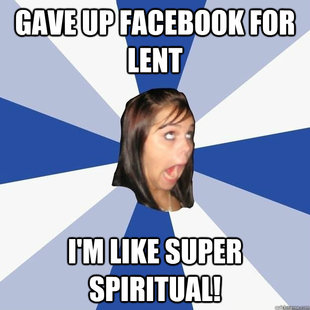This is a follow-up post to The Origins of Lent.
In my previous post, I argued that a 40-day preparatory period leading up to Easter is a very ancient Christian practice, as old as the Nicene Creed or the first complete articulation of the New Testament canon (4th c.). I also argued that fasting has always been a part of the Christian Church’s preparation for Easter, going at least as far back as the early third century. To make this argument I referenced several primary sources, including one well respected Christian Father, St. Athanasius of Alexandria.
The primary question that arises out of that post is, “What kind of fasting was involved in those early days?” and a consequent question is, “How should I fast during Lent?” This post is an attempt to begin to answer both of those questions.
The short answer is that these early sources do not tell us much about exactly how the fast was kept. In his second festal letter of 330 AD, St. Athanasius’ does not give any directions as to what is to be fasted from or how the fast is to be kept, only that it be kept. The reason for this seems to be that there was a great deal of local control over the nature of the fast, and that it was up to the local pastor (bishop) to set the parameters according to his own cultural situation and pastoral wisdom. Thomas J. Talley, in his book The Origins of the Liturgical Year, presents evidence that early Lenten fasting practices varied widely. By this, he means that there was variation both in the number of actual fast days (for there was never a continuous 40 day fast. Sundays were always exempted and Saturdays were also in most places) and in the manner of fasting.
It seems clear that the most arduous form of fasting would be abstinence from all meat and dairy. Additionally, from the sixth century, we find that monks were allowed to eat one meal a day during the fast. What this says about the laity and their practices is unclear, but it seems likely that their fast would have been less arduous. In addition, there were periods of Lent were a less arduous fast was prescribed: some allowing for the eating of diary products and eggs for a portion of the fast.
Talley concludes at the end of the book that though the bulk of our detail concerning Lenten fasting comes from monastic sources, the laity still participated in the observance of Lent in some way. For the laity, Lent was primarily about penitence, a season to especially be mindful of and to repent of one’s sins. What fasting the laity observed is not clear, though it seems, as I mentioned above, that it was locally prescribed by local pastors and bishops, and that it must have been less arduous than that which was prescribed for monks.
Later in Church history, Lenten practices become a bit clearer and more uniform. The practice that came into being was to take one meal a day during Lent, abstaining from meat, milk, and eggs (excluding Sundays). Yet how late this general practice came to be is not clear. As I mentioned above, most of the information we have is from monastic sources. Furthermore, there were many local dispensations that kept the actual fasting from being so severe. Additionally, certain trades and people in certain conditions (ill, pregnant, young or old of age) were exempted. The fact of the matter is that with all the dispensations, Lenten fasting has always been something where a general ideal was applied to local and individual circumstances.
So we return to our original question, “What kind of fast was instituted in the early Church?” The answer is that it was locally variable and individually applicable. Pastors worked with the laity to ensure that some appropriate form of fasting or abstinence was taking place. Monks performed the most arduous fasts, but the laity surely did not follow with the same rigor.
This leads us, in closing, to the second question, which is, “How then should I fast?” The answer is that this is something best left up to individual pastors and churches to decide. Even in the Presbyterian tradition, the elders of the church have the authority to call a fast. The Westminster Confession of Faith 21-5 says that “solemn fastings,” are a part of the true religious worship of God. Furthermore, chapter 62 of the PCA’s Book of Church Order provides for individual churches, presbyteries, and the entire denomination to call for a fast. That chapter even allows for the church to keep a fast called for by civil authorities if the leaders of the church find it in keeping with the Christian faith. There is certainly nothing keeping any individual church or presbytery from calling a fast for Lent. It would be completely in accord with the constitution of our church.
In conclusion, we know that Lenten fasting is very ancient, and we know that the details of the fast have always (to greater and lesser degrees) been left to local churches. Therefore it seems that it would be good practice for our churches to consider ways in which we might begin incorporating Lenten fasting. This is one way in which we can keep step with the broader church and more fully express our unity with her. I wonder if we might heed the admonition of St. Athanasius, a Father of the Church that we hold in high regard:
Persuade them to fast; to the end that we who are in Egypt should not become a laughing-stock, as the only people who do not fast, but take our pleasure in these days.
We in Reformed circles are reticent to fast because we see it as a medieval catholic practice. Yet the historical sources show us that it is far more ancient. These same sources also show that local churches have always had the ability to set the parameters of the fast.
Therefore, let us keep the fast in order that we may keep the feast!
Dr. Timothy LeCroy is a Special Contributing Scholar to the Kuyperian Commentary and is the Pastor of Christ Our King Presbyterian Church in Columbia, MO.














